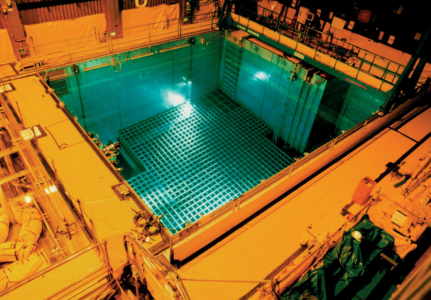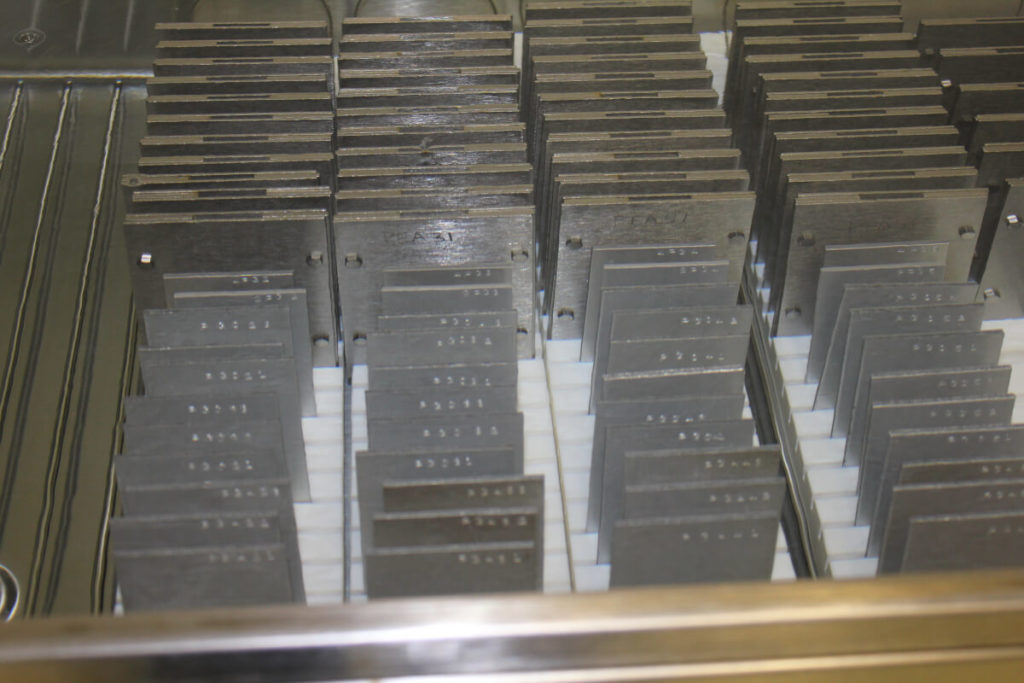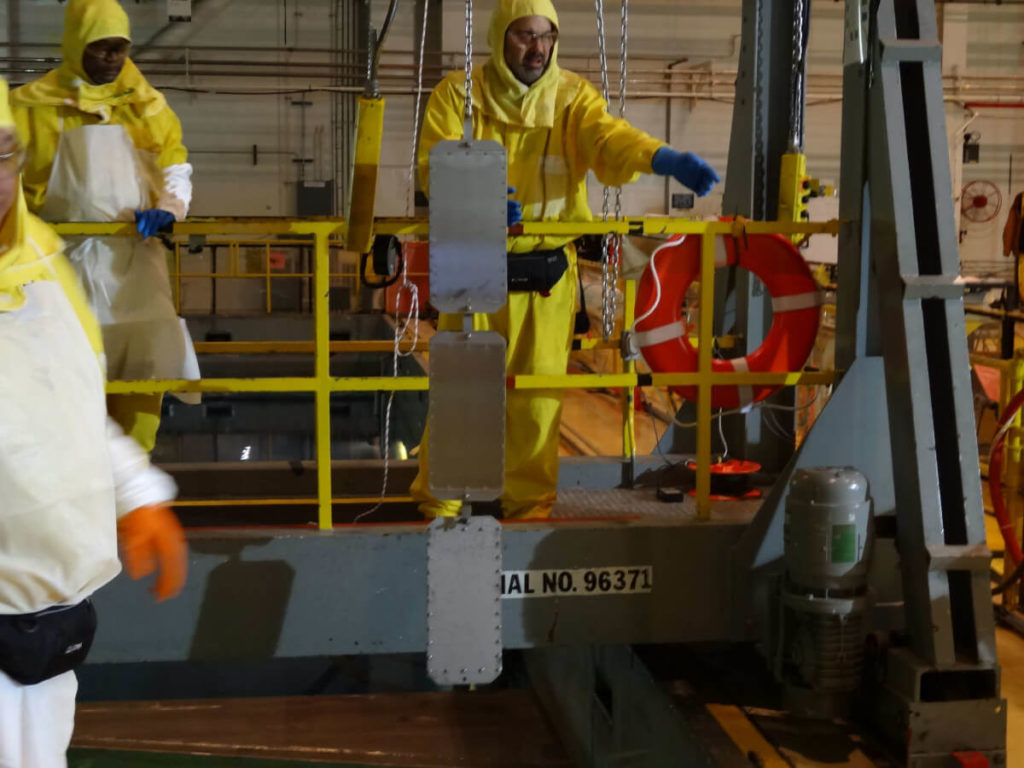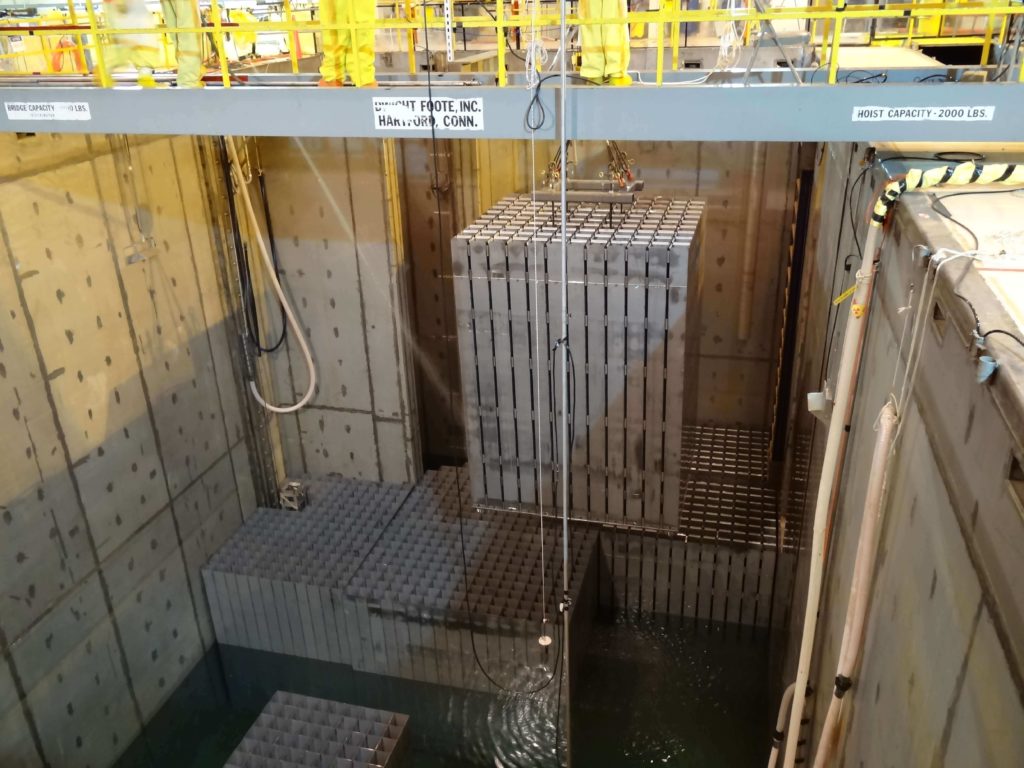Years of EPRI Research Equip Nuclear Plant Operators to Safely Store Used Fuel
EPRI conducted a series of lab and field studies to investigate the efficacy of the neutron absorbers used in spent fuel pools at nuclear power plants. EPRI is also developing a program to coordinate monitoring of the absorbers across the global nuclear industry. “EPRI’s research has helped Exelon to more accurately assess the condition of neutron absorber panels at our plants,” said David Phegley, senior staff engineer at Exelon. “I expect EPRI’s program to be superior to anything an individual utility could create.”
EPRI lab and field research and a new industrywide program are equipping nuclear power plants to get ahead of safety concerns regarding used nuclear fuel stored on-site.
Nuclear plants in the United States were constructed with spent fuel pools for temporary storage of used nuclear fuel. The federal government originally planned to take the fuel for disposal in an underground repository. With the cancellation of the Yucca Mountain repository in 2009, the U.S. Nuclear Regulatory Commission (NRC) instructed utilities to continue managing used fuel on-site until other solutions are developed. Used fuel typically is cooled in pools for several years, then moved into interim dry storage systems.
As pools filled, operators have retrofitted them with storage racks equipped with neutron-absorbing materials, enabling more fuel assemblies to be stored without achieving criticality. To track the condition of these materials, most plants place samples (known as coupons) in the pools and periodically evaluate them for degradation. Plants that have exhausted their coupon supply directly measure the areal density of the neutron absorbers in the pools (a technique known as in situ measurement). Replacing coupons is not an option because they must be placed in pools at the same time as the neutron absorbers to accurately represent degradation over time.
Plant operators have observed pitting, blistering, and other degradation in some neutron absorber materials. In a 2016 Generic Letter, the NRC requested that operators evaluate the efficacy of their absorbers and absorber monitoring.
EPRI investigated these issues in a series of projects. Its 2017–2018 modeling study found that blistering and pitting observed in neutron-absorber materials to date did not measurably impact their performance. In a five-year laboratory study completed this year, EPRI placed BORAL® coupons in test baths and subjected them to heat and water chemistry designed to accelerate corrosion. Researchers found no significant degradation.
As part of a four-year project at the decommissioned Zion Nuclear Power Plant in Illinois, EPRI collected in situ panel measurements from the spent fuel pool and removed panels and coupons from the pools to evaluate them in the laboratory. Even after 22 years in the pools, the panels and coupons were in very good condition. The results demonstrated that the condition of coupons is representative of the condition of the panels, suggesting that coupons are an effective monitoring tool. In situ measurements contained large errors and yielded false positives for panel degradation.
“Nuclear utilities and other stakeholders around the world can use these research results to expand efforts to monitor neutron absorber materials, improving public health and safety,” said Dr. Hatice Akkurt, EPRI Technical Executive. “Our research benefits stakeholders in the United States by providing data and other information to support their response to the NRC’s inquiries.”
For spent fuel pools lacking coupon monitoring programs or with limited remaining coupons, EPRI is developing a global Industrywide Learning Aging Management Program (i-LAMP) for neutron absorber monitoring. It is based on the idea that neutron absorbers of the same materials and exposed to similar water chemistries and irradiation should age in the same ways. If a pool without coupons can demonstrate that it has characteristics (such as materials and age) similar to those in pools with coupons, it can use their coupon degradation data to inform neutron absorber monitoring.
i-LAMP has these components:
- Collect and analyze water chemistry data from pools across the world and use the results to assess whether changes are needed in water chemistry guidelines.
- Collect global data from coupon monitoring programs and analyze them for indicators of degradation, trends in coupon conditions, and potential relationships between degradation and water chemistry.
- Collect data from pool operators without coupon monitoring programs, such as areal density and thickness of neutron absorbers, and the year in which these materials were manufactured and deployed.
- Evaluate water chemistry, panel, and coupon data to determine the ways in which pools are similar. Develop criteria that potentially enable pools without coupon monitoring programs to rely on pools with monitoring programs for insights on the condition of neutron absorber panels.
- Develop guidelines for use by all pool operators (with and without coupon monitoring programs) to track neutron absorbers, mitigate degradation, and maintain safe, reliable pool operations.
Initially, guidelines will focus on pools that use BORAL but will later broaden to include other neutron absorber materials. EPRI is also considering the possibility of coordinating coupon monitoring and sharing operating experience across the industry. This can improve management of neutron absorber materials by preserving remaining coupons, reducing costs, and enhancing safety and efficiency.
“EPRI’s research has helped Exelon to more accurately assess the condition of neutron absorber panels at our plants,” said David Phegley, senior staff engineer at Exelon, which operates a 22-unit nuclear fleet. “Because all spent fuel pools are similar, EPRI’s data on coupon degradation is relevant to our plants without coupons. This can significantly reduce costs and occupational dose for Exelon if in situ testing is not used.”
“Over the last several years, regulators around the world have expressed concern about the effects of aging in pools and increasing pool capacities,” said Akkurt. “We are not seeing any problems with degradation today, but we have to keep monitoring long-term.”
The NRC has accepted a draft version of the i-LAMP program. When program development is completed in 2020, EPRI will submit it for formal NRC review and endorsement as an alternative monitoring approach.
“I expect EPRI’s program to be superior to anything an individual utility could create,” Phegley said.
EPRI Technical Expert:
Hatice Akkurt
Additional Resources:
- Roadmap for Industrywide Learning Aging Management Program (i-LAMP)
- Evaluation of the Impact of Neutron Absorber Material Blistering and Pitting on Spent Fuel Pool Reactivity
- Evaluation of BORAL® Coupons from Zion Spent Fuel Pool
- Evaluation of BORAL® Panels from Zion Spent Fuel Pool and Comparison to Zion Coupons









